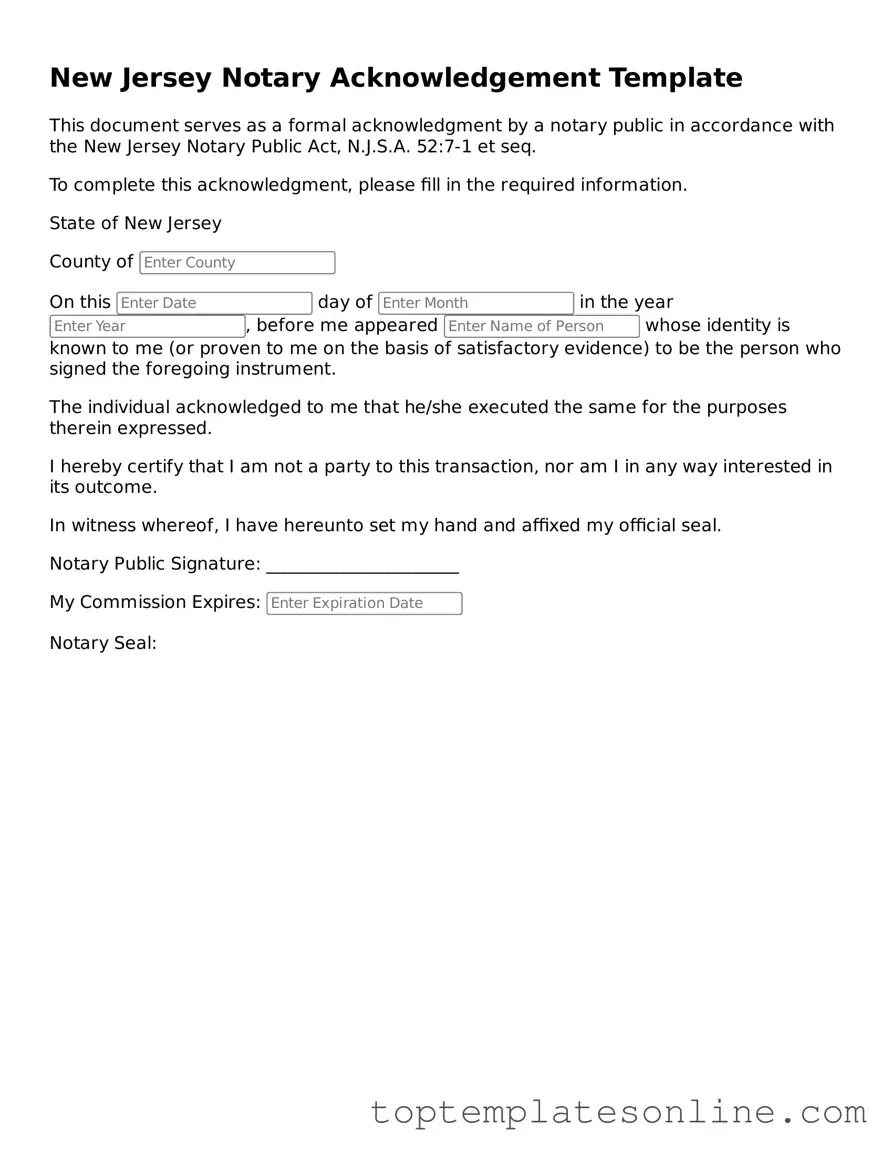Blank Notary Acknowledgement Template for New Jersey State
The New Jersey Notary Acknowledgement form is a legal document used to confirm that a person has willingly signed a specific document in the presence of a notary public. This form serves as proof that the signature is genuine and that the signer understands the contents of the document. Understanding how to properly use this form can help ensure that your important documents are legally valid and recognized.
Customize Notary Acknowledgement Here
